Kumbh Mela festival has opened in Prayag. Organizers are expecting 400+ million people - the largest gathering of humanity. [It does not mean all of them will show up at once.]
The main objective is to take a holy dip at the joining point of three rivers: Ganga (the Ganges), Yamuna and Saraswati. The last one is a metaphorical river. [It did exist some 5,000 years ago but in the North West of India - not around Prayag.]
How large is the gathering of 400 million people? Compare that with the Hajj. Hajj attracts less than two million. Imagine if the entire population of the US and Canada decided to show up for the US Presidential Inauguration Parade and partied for 45 days - it will be that big.
People come from faraway places.
In the last Kumbh Mela of 2019, some 240 million showed up.
Logistically it is a task of superhuman proportion. 150,000 toilets have been built and a network of community kitchens can each feed up to 50,000 people at the same time. 68,000 LED light poles have been erected for a gathering so large that its bright lights are visible from space stations.
Harvard University has produced a book documenting the logistics.
Authorities and the police have also set up a network of "lost and found" centres and an accompanying phone app to help pilgrims lost in the immense crowd "to reunite with their families". Everything has gone digital.
The Mythology of the Origin of Kumbh Mela
It tells of the battle between the gods and the demons for the nectar of life (Amrit) - produced from the churning of the milk ocean and was placed into a pot (Kumbh).
The coveted kumbh was carried over India by Dhanvantari, the physician of the gods, who, en route to Paradise, stopped in Prayag, Hardwar, Ujjain, and Nasik to rest, giving the mela its four venues.
In other telling, Garuda, or Indra in the form of Mohini, lets the Kumbh fall to the ground, thus sprinkling the amrita at four places on the earth - Prayag, Hardwar, Ujjain and Nasik.
Thus, these four places contain the Nectar of Life.
The Belief: If a devotee takes a bath in the water of holy rivers during the Kumbh Mela, the gods will bless them forever. It will wash away all their sins and they will approach salvation one step closer. They will not be reborn.
Executive aims for a dip in the river at this moment in the calendar: Immortality - but not in the sense of physically not dying. It is to stop being reborn.
Kumbh Mela has many admirers. Mark Twain visited one:
It is wonderful, the power of a faith like that, that can make multitudes upon multitudes of the old and weak and the young and frail enter without hesitation or complaint upon incredible journeys and endure the resultant miseries without repining.
Jawaharlal Nehru, the first Prime Minister of India, wrote in his book, Discovery of India:
In my own city of Allahabad (currently Prayag), or Hardwar, I would go to the great bathing festivals, the Kumbh Mela, and see hundreds of thousands of people come, as their forebears had come for thousands of years from all over India, to bathe in the Ganges. I would remember descriptions of these festivals written thirteen hundred years ago by Chinese pilgrims and others, and even then these festivals were ancient and lost in an unknown antiquity. What was the tremendous faith, I wondered, that had drawn our people for untold generations to this famous river of India?
There are four places for Kumbh Mela. In Hardwar on the bank of The Ganges, In Prayag at the confluence of the Ganges and the Yamuna, and the unseen Sarasvati, in Nasik at Godavari and the Ujjain at Shipra.
How Kumbh Mela has grown at Prayag
400,000 pilgrims attended the Mela in 1903. More than 500,000 people gathered for the Mela in 1954. The number of people rose to 10 million in 1998, and 40 million in 2001. In 2007 about 70 million people attended and in 2013 around 100 million people attended. 240 million people attended the Mela in 2019 making it the largest religious meeting in the world.
East India Company (EIC) Introduced a Tax
In 1806, the East India Company started collecting the Pilgrim Tax, setting the tax rate at one rupee per person (vehicles and other conveyances extra).
Fanny Parks, a resident in the Fort of Allahabad, noted: "Every man, even the veriest beggar, is obliged to give one rupee for the liberty to bathe at the holy spot; and if you consider that one rupee is sufficient to keep that man in comfort for one month, the tax is severe."
It created a big animosity between the EIC and the pilgrims. It is no coincidence that the First War of Independence (British called it a mutiny) of 1857 started in that very city of Kumbh Mela - then called Allahabad. Allaha-bad was bad alright. It allowed Colonel James George Smith Neill of the EIC to indiscriminately killing unarmed civilians. The British decided to take the control of India from the hands of the EIC.
The seeds of India’s independence movement started at Kumbh Mela.
Holy Men Circus
Kumbh Mela attracts a large number of holy men (sadhus) of different sects.
The Nagas wear no clothes. The Kalpawasis take three baths a day. The Urdhawavahurs imposed severe austerities on the body.
All these holy men perform religious rituals associated with their respective communities.
Final Word: Business of Kumbh Mela is now digital
The Mela created around 250,000 jobs in 2019, and was estimated to earn around 15 billion dollars. Mela also draws foreign tourists. What will be notable for people either to buy something or make an offering to the gods is the Unified Payment Interface (UPI) introduced in 2016. It is now a 200 billion dollar behemoth. A large proportion of transactions at the Kumbh Mela is expected to be cashless through the UPI. Even the smallest of the stalls are equipped with this form of payment.
The number of transactions by the UPI system has gone from zero to 18 billion per month in eight years. Big gatherings like the Kumbh Mela benefit from it.
In Prayag, Allahabad for modern India, it's the biggest show on earth, conceived by Hinduism's antique memory, co-scripted by mythology, history and tradition, and enacted by keepers of wisdom and seekers of moksha. It's the costume drama of nirvana and the passion-play of the East and the naked dance of asceticism and the hara-hara delirium of the hippie and the raw picturesque of pure faith rolled into one oversized panorama of India in its divine diversity-even in the digital age.
S Prasannarajan, 2001, India Today magazine.




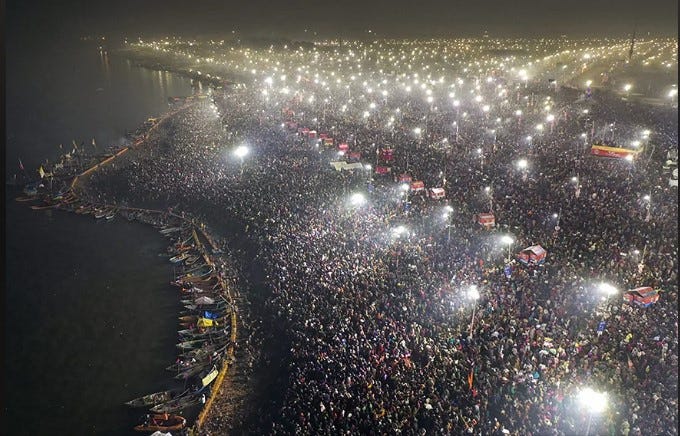

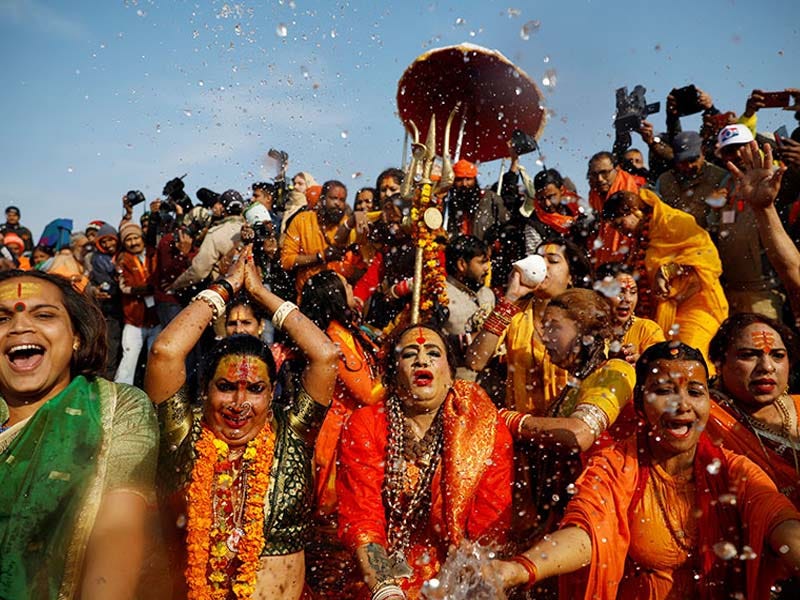
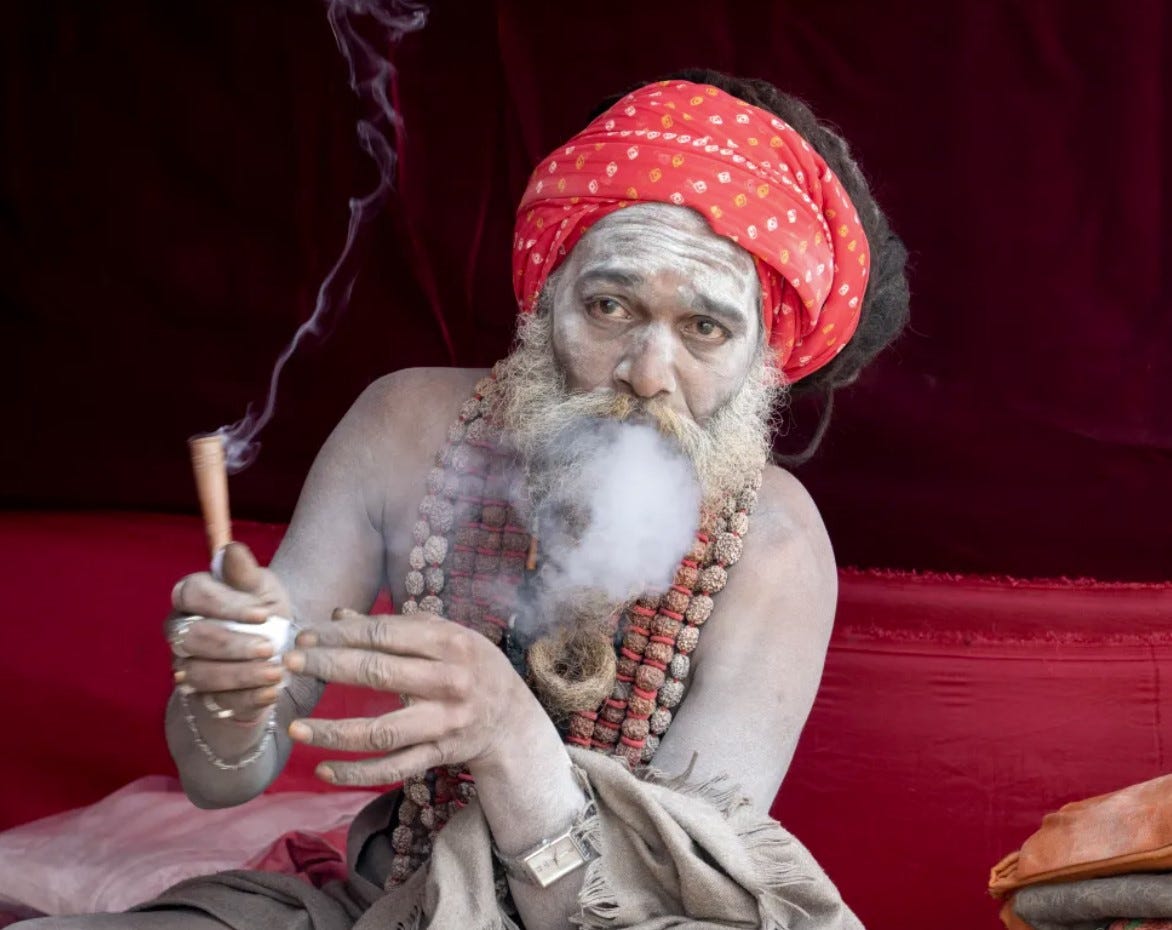
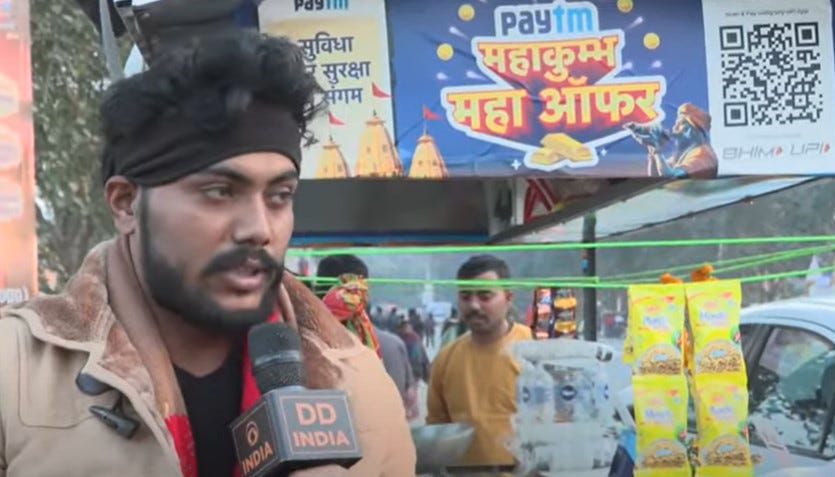
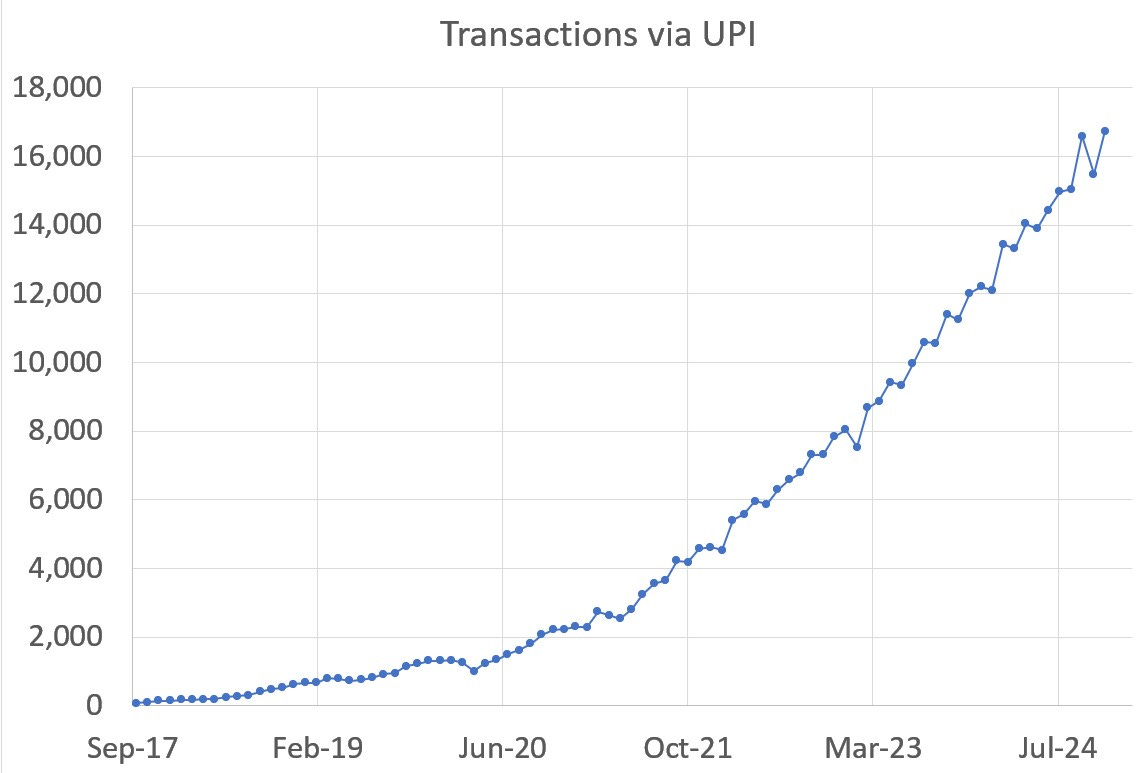
So gripping and so beautifully write. Thanks Tapen Sinha.
This is the best write-up on the Kumbh Mela that I've ever read, or will ever read.